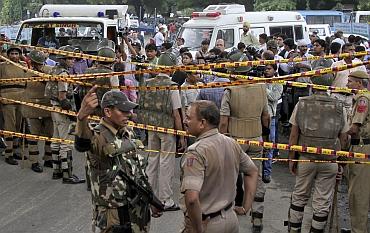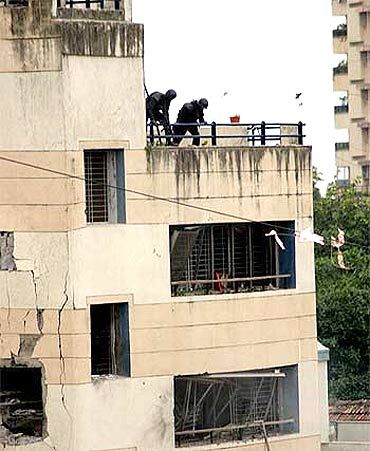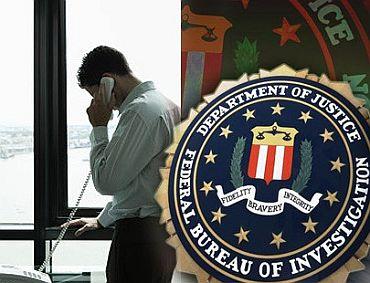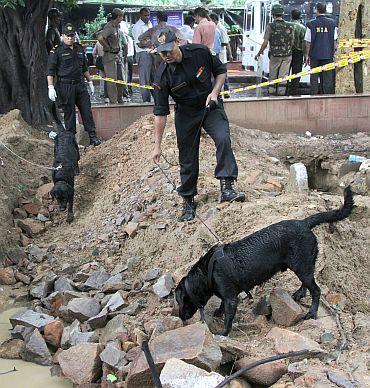
After nearly three years, we are not in a position to make a meaningful assessment of the new post-26/11 terror threat for want of essential data, says B Raman.
The terrorism situation on the ground is becoming more and more worrying. It is not just because the terrorists have become smarter than they were before. They have, of course, but that should not be the main cause of worry.
It is because they have become more invisible, more inaudible and more unquantifiable than before. After nine terrorist strikes since 26/11, three each in Mumbai and Delhi and one each in Pune, Bengaluru and Varanasi, we still do not have an idea of who they are, what is their ideology, what are their demands, how strong they are, how are they organised, are they home-grown or externally sponsored, where are their roots etc.
After nearly three years, we are not in a position to make a meaningful assessment of the new post-26/11 terror threat faced by us for want of essential data.
You get the data from the network of your human agents spread across the country and abroad, from your TECHINT (technical intelligence) set-up inside the country and along the international borders, from your interrogation and surveillance of suspects, from your local inquiries and from your interactions with different communities.
How come not one of these means of collecting data seems to be functioning? Our HUMINT was generally below par, but deficiencies in our HUMINT (human intelligence) coverage used to be made up by our above par TECHINT coverage.
Many sleeper cells of terrorist organisations were detected and neutralised before 26/11, and many terrorists were identified and arrested after the commission of a terrorist strike by intercepting their electronic chatter.
Why has there been no worthwhile electronic chatter after 26/11? Have the terrorists stopped using modern means of communication or are they using more modern means of communication which our TECHINT set-up is not able to identify and break through?
...
You could see that the counter-terrorism capability of our TECHINT set-up seems to have weakened from the fact that there have been very few instances -- if at all there are any -- of new sleeper cells being tracked down and neutralised and new suspects being rounded up and interrogated.
What is this apparent weakening of our counter-terrorism TECHINT capability due to? Turf battles? Non-recruitment of qualified and motivated TECHINT experts? Non-investment in equipment?
Whatever be the reason, it is a worrisome development. HUMINT and TECHINT work in tandem. If one is weak, the other makes up for it.
If both become weak simultaneously, we start groping in the dark unable to see or hear the terrorists and sense their furtive movements and actions across the country.
Counter-terrorism has three components: prevention through timely and actionable intelligence, prevention through effective physical security and attrition of the terrorists' capability through successful investigation and prosecution.
The physical security should be so tight that even if intelligence fails or is not up to the mark, we are still able to thwart the terrorists.
Physical security cannot be blamed for seven of the nine terrorist strikes that have taken place since 26/11. But, poor physical security has definitely contributed to the two strikes outside the Delhi high court in May and on September 7.
Since November, 2007, the Indian Mujahideen had been repeatedly criticising the Indian judiciary and on November 23, 2007, it had carried out seven explosions outside courts in three cities of Uttar Pradesh.
Yet, for four years, we do not have seem to have made any physical security audit of important courts -- particularly in Delhi and Mumbai -- nor have we taken necessary action to strengthen their physical security; either through governmental means or by putting private physical security agencies on the job.
...
It used to be said and believed before 26/11 that while our preventive capability was weak, our ability to cause attrition in the ranks and capability of terrorist organisations through good investigation and prosecution was high.
Even this capability, about which we used to boast before 26/11, seems to have weakened with the result that we have not made much headway in the investigation of the post-26/11 terrorist incidents.
The series of terrorist strikes carried out by the IM and Pakistani organisations across India outside Jammu and Kashmir since the Mumbai blasts of March,1993, made us realise that jihadi terrorism --whether home-grown or imported from abroad -- had become a pan-Indian threat and that it cannot be dealt with in the same manner as we were dealing with cross-border terrorism in J&K, which was a different kettle of fish.
It was this realisation which brought into existence post-26/11 the National Investigation Agency, which functions under the control of the home minister. But the NIA as it has evolved is neither a donkey nor a mule. One does not know what it is.
Many of us -- like me -- who had been advocating a new counter-terrorism investigation machinery to deal with the new pan-Indian terrorism, wanted some set-up similar to the counter-terrorism division of America's Federal Bureau of Investigation.
The FBI is exclusively responsible for all preliminary inquiries, investigation and prosecution in all terrorism incidents of a federal dimension.
It is for the director of the FBI to assess whether an incident of violence amounted to an act of terrorism. Once he decides so, he asks the FBI to take over the investigation.
He does not require any prior permission from the President or from any state governor. The decision is his and his alone. As a result of this, the FBI has a total picture of the terrorism situation in the US.
...

The decision to set up the NIA in India was taken in haste after the traumatic events of November 26-28, 2008, in Mumbai.
As a result, neither the ruling coalition nor the opposition carefully debated as to what kind of investigation mechanism we need to deal with this pan-Indian threat, what powers and responsibilities it should have and how to persuade the states to accept the creation of a pan-Indian investigation agency with teeth.
Under the procedure laid down, it is the home minister who decides what cases need to be entrusted to the NIA and what cases need not be. Eight of the terrorist strikes after 26/11 were not entrusted to the NIA.
Only the latest strike of September 7 has been. Why the previous cases were not entrusted to the NIA? How can the NIA investigate pan-Indian terrorism in an integrated manner if the MHA picks and chooses as to what cases will be investigated by the NIA and what cases need not be?
These are some of the issues that need crying attention after the terrorist strike of September 9. It is hoped at least now the government and the opposition will start thinking of pan-Indian terrorism in an integrated and professional manner and not in a manner marked more by considerations of partisan politics than professionalism.